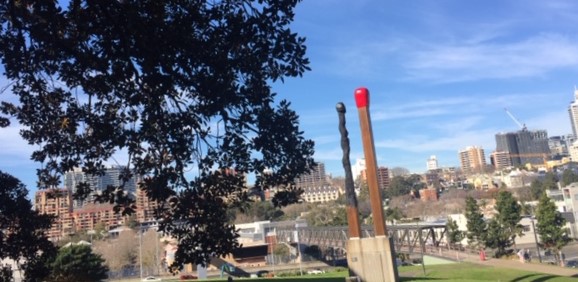How much do unsecured creditors receive out of a liquidation or bankruptcy from any ‘successful’ judgment obtained by the liquidator or trustee under their vast range of recovery remedies – strong remedies that are not available to any other litigant?
Less than 5c in the dollar?
We could find out.
This question has been unasked for a while and is now prompted by the Australian government’s marketing of its proposed new anti-phoenix laws, the belligerently titled Treasury Laws Amendment (Combating Illegal Phoenixing) Bill 2019, introduced into parliament on 13 February.
Among its claimed purposes, it would ‘extend the recovery provisions available to liquidators, to enhance the recovery of assets lost through illegal asset stripping, for the benefit of employees and other creditors’. [my emphasis].
Those last words are important and prompt my opening question.
‘for the benefit of creditors’
The question might be answered by this proposed reporting process. The aim of it is to provide us all with transparency and disclosure around the reality of the often-used phrase “for the benefit of creditors”.
The proposed reporting process
After the court’s determination of any litigation by an insolvency practitioner (IP) for recovery of moneys or assets, and at a time when these details are available, the IP should prepare and publish an account of:
- The amount claimed in the litigation proceedings $
- The total remuneration of the IP reasonably claimed for work associated with the proceedings, including investigations, examinations, instructing lawyers, preparing evidence as to insolvency and so on, and any follow up work done through to the payment of any dividend to creditors from the moneys recovered $
- The total of legal costs of the IP, including those incurred in recovering the judgment sum $
- The amount recovered from the defendant, including the amount of costs – if any $
- The amount paid to unsecured creditors $.
These might be tweaked as necessary.
Why?
There are several reasons for proposing this, including:
- Insolvency suffers from what has been termed an ‘expectation gap’, that it can and should produce more that it can realistically deliver, engendered in particular when governments promise that legislation will assist all and sundry to recover their money.
- The reality is that before unsecured creditors are paid, the IP has priority for their remuneration and expenses. That is, often the bulk of ‘successful’ litigation recoveries go to the IPs, and their lawyers, or their litigation funders. There is generally nothing wrong with that but this should be exposed.
- Creditors will often be asked by IPs whether certain recovery litigation should be pursued – their views need to be based on realistic expectations.
- IPs often do not recommend taking litigation because of these very reasons. Some creditors may unfairly criticise the IP for being too conservative.
That is not to be critical of the IPs, or lawyers, or the courts, and all their associated costs, but transparency and knowledge is the first step in thinking about whether they might be a better way.
It would be useful if the insolvency profession itself were to put this reporting process in place, even as a pilot.
The courts might likewise be concerned to know whether the time they take in hearing insolvency recovery litigation in fact yields any outcome.
Finally, it is accepted, without explaining more, that insolvency litigation may properly be brought for public interest and related purposes that override the possibility that creditors will receive any benefit.
Case study of a ‘significant win’
In this context, here is a useful if extreme case study.
The liquidators of Walton Constructions took recovery proceedings under s 588FB of the Corporations Act and obtained judgment on 13 December 2016 for $ $679,453.80 plus interest and costs against a company called QHT Investments.[1]
The liquidators had earlier unsuccessfully applied for freezing orders against the assets of QHT, in order to ensure that if their recovery action were successful, there would be money or assets there from which to recover.[2]
The liquidators pressed on, and judgment was obtained, this being reported as a ‘significant win’,[3] which it probably was in real legal terms.
A mediation between the liquidators and QHT was left unresolved on 21 December 2016.
On 24 December 2016, QHT Investments Pty Ltd went into creditors voluntary liquidation and a liquidator was appointed.
QHT’s liquidator may have enough to pay Walton Constructions the $679,453.80 it owes, and costs and interest, but realistically he will not.
It may be that the large amount of money spent by the Walton liquidators did not, financially, benefit creditors or anyone.
Treasury Laws Amendment (Combating Illegal Phoenixing) Bill 2019
According to the Explanatory Memorandum, these amendments are said to overcome the difficulties faced by liquidators where the company has insufficient funds to cover the cost of court action; and they would allow ASIC to intervene where a liquidator is not fulfilling [his or her] obligations to recover company property, despite the exigencies of litigation, “for example because the liquidator is complicit in the illegal phoenix activity of a company director”, or, for that matter, some person in government is.
Importantly, this process would allow its comparative value, if passed by parliament, to be assessed. For example, we could assess whether giving ASIC the power to make administrative recovery orders produces a far better outcome for ‘unsecured creditors’; apart from any constitutional issue that power might raise.
Responses, including as to why not, are invited.
—————————
[1] McCann, in the matter of Walton Construction (Qld) Pty Ltd (In Liq) v QHT Investments Pty Ltd [2018] FCA 1986
[2] McCann, in the matter of Walton Construction (Qld) Pty Ltd (In Liq) v QHT Investments Pty Ltd [2016] FCA 1092
[3] Insolvency News Online – Walton judgment confirms bank’s self-serving role, 14 December 2018



